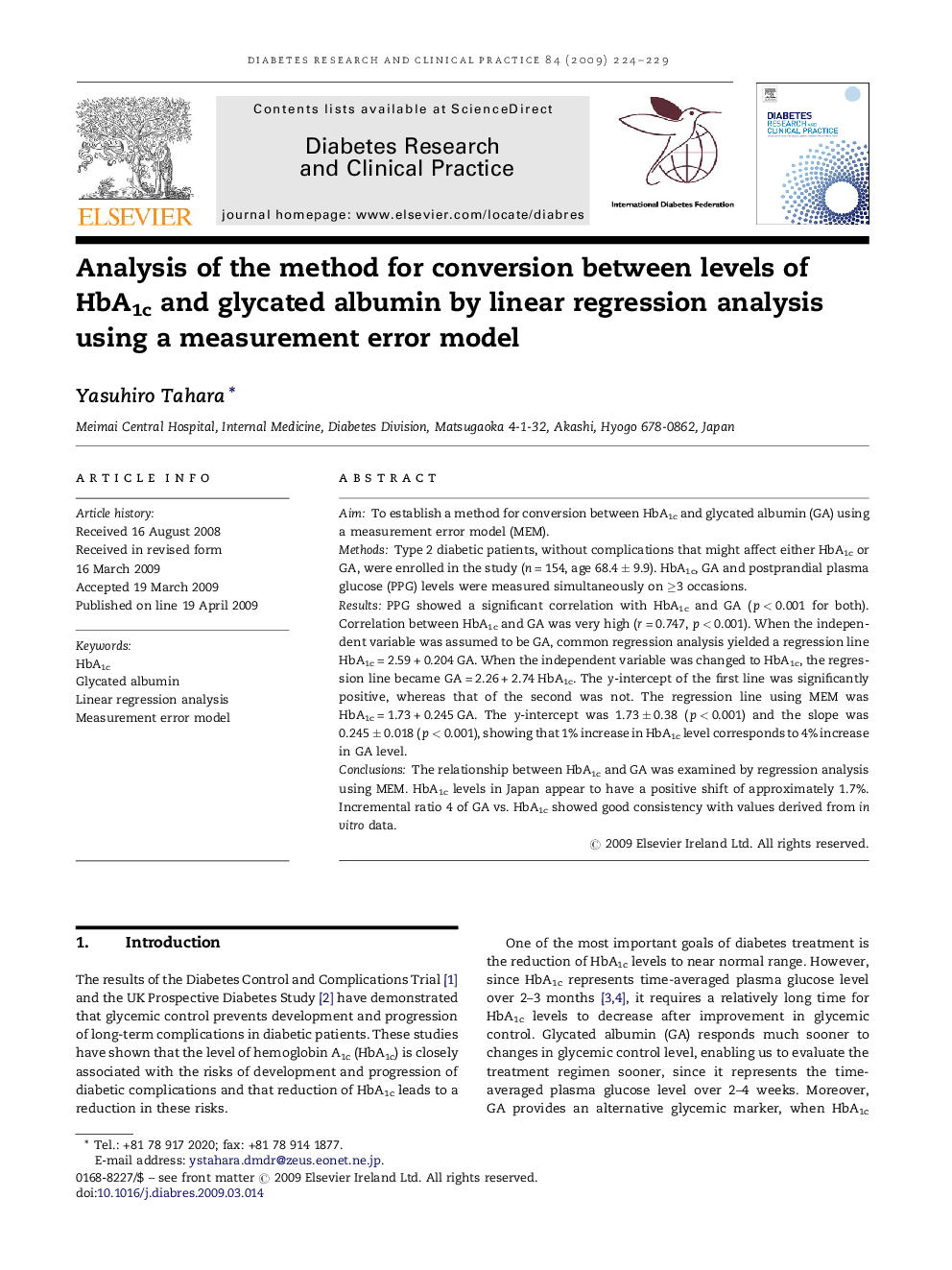| Article ID | Journal | Published Year | Pages | File Type |
|---|---|---|---|---|
| 2798036 | Diabetes Research and Clinical Practice | 2009 | 6 Pages |
AimTo establish a method for conversion between HbA1c and glycated albumin (GA) using a measurement error model (MEM).MethodsType 2 diabetic patients, without complications that might affect either HbA1c or GA, were enrolled in the study (n = 154, age 68.4 ± 9.9). HbA1c, GA and postprandial plasma glucose (PPG) levels were measured simultaneously on ≥3 occasions.ResultsPPG showed a significant correlation with HbA1c and GA (p < 0.001 for both). Correlation between HbA1c and GA was very high (r = 0.747, p < 0.001). When the independent variable was assumed to be GA, common regression analysis yielded a regression line HbA1c = 2.59 + 0.204 GA. When the independent variable was changed to HbA1c, the regression line became GA = 2.26 + 2.74 HbA1c. The y-intercept of the first line was significantly positive, whereas that of the second was not. The regression line using MEM was HbA1c = 1.73 + 0.245 GA. The y-intercept was 1.73 ± 0.38 (p < 0.001) and the slope was 0.245 ± 0.018 (p < 0.001), showing that 1% increase in HbA1c level corresponds to 4% increase in GA level.ConclusionsThe relationship between HbA1c and GA was examined by regression analysis using MEM. HbA1c levels in Japan appear to have a positive shift of approximately 1.7%. Incremental ratio 4 of GA vs. HbA1c showed good consistency with values derived from in vitro data.
